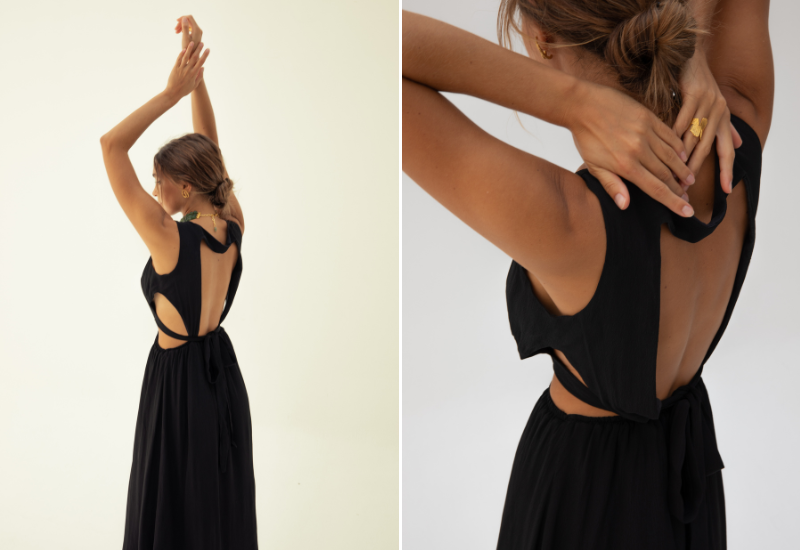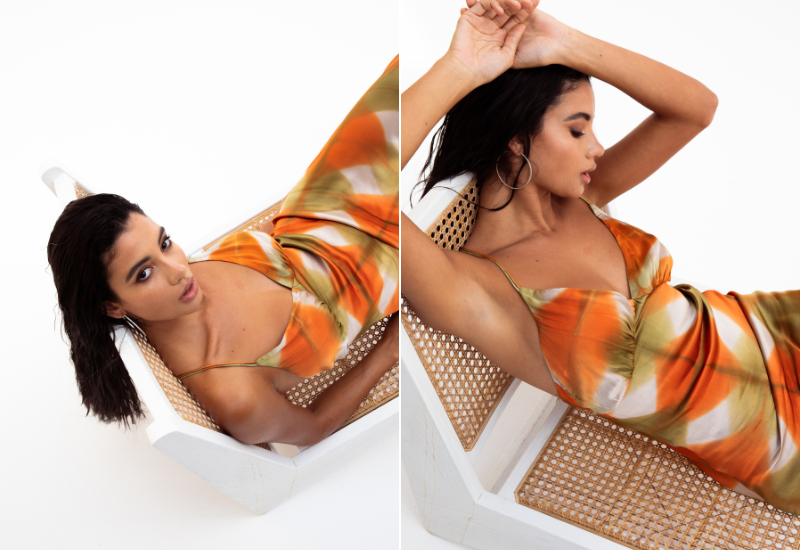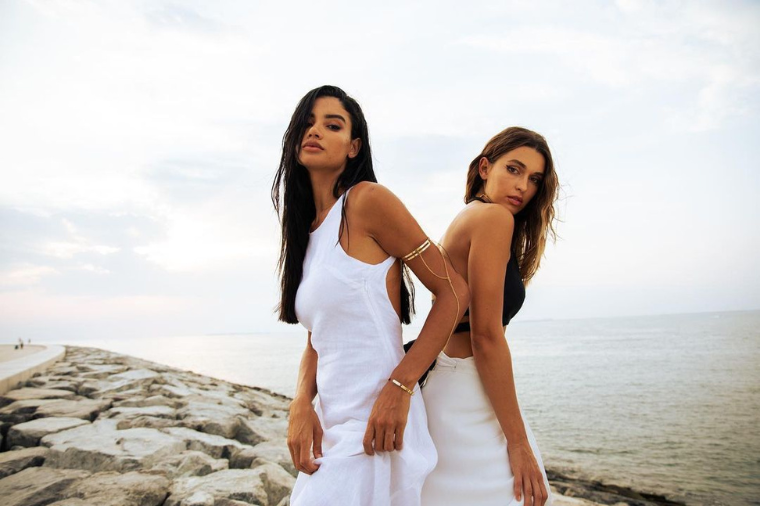Hala Al Shammari, founder of homegrown fashion label HALA on breaking stereotypes and classic cuts.
What do the first 30 minutes of your day look like, your morning routine.
I often start my day by checking my phone. During those early moments, I indulge in scrolling through the brand’s Instagram page and analyse the website’s statistics from the previous day. After this digital deep dive, I enjoy a healthy breakfast then, head to the gym. It’s during these moments of exercise that I find myself brainstorming and devising new strategies to enhance the brand’s presence.

What inspired you to launch HALA?
Launching HALA has been a lifelong dream of mine, one that I’ve carried with me since my teenage years. Growing up with four older sisters, I was constantly surrounded by fashion, and it became a huge part of my life. During my senior year in high school, I made up my mind to study Fashion Design. After completing my fashion design degree and gaining valuable experience in the fashion industry over the years, I finally felt confident enough to embark on this transformative chapter in my life.
How have your previous experiences shaped the brand and what makes HALA unique?
My journey, starting from my university days when I had to create an entire eight look collection has profoundly influenced the development of HALA’s distinctive identity. Since that time, I’ve maintained a consistent aesthetic in my design approach. I’m passionate about achieving a harmonious balance in my designs mostly through the manipulation of cuts and shapes. What sets HALA apart is its commitment to designing statement pieces that effortlessly transition between dressing up and dressing down. I get immense satisfaction from both wearing and creating garments that make a bold statement. A trademark of HALA’s design philosophy is the juxtaposition of clean, elegant front designs with unexpected, captivating twists at the back, such as my personal favourite, the backless cut.
Your pieces are influenced by Lisbon – can you expand on this?
Portugal, particularly Lisbon, has left a lasting mark on my sartorial aesthetic. Spending summers there and living in Lisbon for a couple of years had a transformative effect on how I perceive fashion. It encouraged me to embrace a more minimalistic approach to style. Lisbon has become my favourite place for creative inspiration, a wellspring of ideas for future designs. Everywhere you look, there’s inspiration. In Lisbon’s summer heat, breathable and comfortable clothing becomes essential. However, this doesn’t mean sacrificing edginess and fashion forward choices. One of the most striking examples of the Portuguese influence on my designs is shown in one of my favourite pieces, the Nora Dress. It’s a backless white linen dress that combines comfort and style seamlessly. It’s the perfect choice for a day filled with events.
How does the brand shatter stereotypes through your design?
The brand aims to challenge stereotypes surrounding Arab women on a global scale through its designs by redefining the perception of Arab fashion. Often, those living outside the Middle East may hold misconceptions about how Arab women dress. While some may choose to embrace conservative attire many, particularly in places like Dubai feel empowered to express themselves through more daring and unconventional fashion choices. For me, it would be a tremendous honour to reach a global audience and showcase an alternative and progressive representation of Arab fashion. By doing so, the brand seeks to shatter stereotypes and promote the idea that Arab women are diverse in their fashion preferences, and they can confidently embrace a wide range of styles and expressions. This broader perspective challenges preconceived notions and creates a more inclusive and accurate understanding of Arab women’s fashion choices on a global scale.
View this post on Instagram
What has been the. Biggest challenge to date and how did you overcome it?
Facing challenges is an integral part of any business journey, and one of the significant obstacles I encountered was finding the right clothing manufacturer. The search for a suitable clothing manufacturer was indeed challenging. It was crucial to find one that not only aligned with the brand’s ethical values but also shared the commitment to meticulous attention to detail, which is vital for the quality of clothing I aimed to produce. I initially explored options in various countries, including Portugal, Lebanon, and even India, where I produced my first collection. However, as a start-up label, I came to realize that having my production based in the same country as me was necessary for maintaining the level of quality I desired. Fortunately, I eventually found a clothing factory in Dubai that not only understood my specific requirements but also shared the same vision for quality. This discovery had a significant turning point and allowed me to overcome one of the most difficult challenges on my journey.

Do you feel pulled to the creative or commercial side of the business?
I definitely enjoy the creative side of the business more, but I find working on both aspects to be incredibly rewarding. Balancing both sides is crucial because in reality, I’m not always engaged in the creative aspects. In fact, the business side which involves running the website and most importantly maintaining a strong social media presence is just as vital as the design process. Even if you have an exceptional product, it won’t succeed if it’s not marketed effectively and creatively. So oftentimes creativity becomes an integral part of the business side as well. The synergy between the creative and commercial aspects is what drives the success of any brand.
You’re a third culture woman – how has this influenced your pieces?
Being a third culture woman has had a significant influence on my pieces and design philosophy. While it can be challenging at times not to have a clear sense of home, I feel incredibly grateful to have grown up as a third culture kid in a diverse city like Dubai. This multicultural environment has exposed me to a multitude of cultures and nationalities, which has been a tremendous source of inspiration. This knowledge has been great in shaping my designs because I have a keen sense of what type of designs would resonate with different demographics. Despite these differences, there’s a common source that unites all my clients, and that is the desire to stand out and support a local brand. This shared value is what brings together a diverse group of women who appreciate the unique and standout nature of my designs while also supporting a local brand.
You’re soon launching your FW23 pieces – tell us more about the collection.
HALA’s upcoming collection focuses on timeless pieces suitable for year round wear. The collection features darker and more muted shades, reflecting the transition into fall and winter. These versatile pieces combine style and practicality, making them suitable for various occasions and designed to be long lasting additions to your wardrobe
What are the key material and textiles that you use for your pieces?
The choice of materials and textiles for my pieces depends on the specific design. For more structured pieces, I prefer to use materials like cotton or linen, which provide the desired structure and durability. When creating flowy and drapey dresses, I often opt for silky satin as it offers the desired fluidity and elegance. Quality is of utmost importance to me, so I prioritize using the highest quality materials available. I also have a strong commitment to sustainability and aim to reduce the use of polyester whenever possible, opting instead for more sustainable materials in my designs.
What advice would you give to aspiring fashion designers?
My advice to aspiring fashion designers would be to follow your passion and believe in your abilities. Take your time to develop your style and brand identity and study the fashion market to identify opportunities and gaps. Networking is key, so connect with mentors and professionals in the industry. Keep learning, experiment, and stay innovative. Persistence is vital, as the fashion journey can be challenging.
How has being based in the UAE been supported you in being able to build your brand?
The UAE has been an incredibly supportive environment for building my brand. I’ve found it to be a unique country that actively encourages and nurtures an entrepreneurial mindset. In recent years creating a clothing brand in the UAE has become increasingly accessible, thanks to the growth of the textile and clothing production industry in the region. Before launching my brand, I spent two years searching for clothing production factories outside the UAE. While I worked with various factories in different countries and even produced my first collection abroad, I eventually came to the realization that the UAE offered everything I needed in terms of accessibility and quality. As a result, I’m proud to say that my brand is produced right here in Dubai. This speaks to the UAE’s commitment to fostering a thriving entrepreneurial ecosystem and its support for businesses like mine to thrive locally.
This is ‘The Fearlessness Issue’ – how do you overcome your fears?
Overcoming fears is subjective and can vary depending on the nature of the fear. In many cases, I find that the best approach is to face your fears and take the leap. We often hold ourselves back from potential success because of self-doubt, the fear of failure or shame. However, it’s essential to remember that it’s often a matter of mind over matter. When you set your mind on conquering something you fear and commit to it, you’ll find the strength and determination to overcome it. Ultimately, taking that first step can lead to surprising outcomes and personal growth that you might not have experienced if you let fear hold you back.
October – The Fearlessness Issue with Chaumet – Download Now
– For more on luxury lifestyle, news, fashion and beauty follow Emirates Woman on Facebook and Instagram
Images: Supplied












